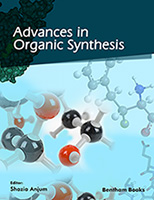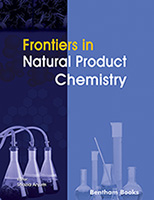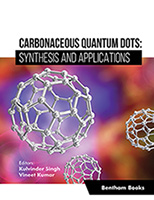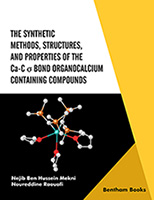I was first introduced to fluorine chemistry over 30 years ago as a PhD student at Manchester University (with Robert Hazseldine). My involvement and interest in organofluorine chemistry grew during my postdoctoral years, in particular while in George Olah’s laboratory. Over the years, my research activities and interests branched out into other areas of mechanistic and synthetic chemistry, but I continued to maintain serious interest in fluorine chemistry and managed to keep some research activity going in the field whenever possible. Today’s synthetic organofluorine chemists have at their disposal a wide range of both electrophilic and nucleophilic fluorinating agents whose reactivities/ selectivites may be tuned to the task at hand. Further exciting new developments include the synthesis and utility of chiral electrophilic fluorinating agents, application of transition metal catalysis to enantioselective electrophilic fluorination, biotransformations for synthesis of chiral fluorinated materials, and the emergence of “tamed” fluorination under “green” conditions. Whether by improving on the more traditional reagents or by developing newer, more task-specific agents, the repertoire of synthetic organofluorine chemistry has greatly expanded during the last decade; and these advances are bound to create greater diversity in terms of structural, physical, and biological properties.
Early in 2004 I received an invitation from Dr. Atta-ur-Rahman, Editor for “Advances in Organic Synthesis”, to act as Executive Guest Editor for a volume within this series, on a topic of my own choice. I had contemplated for some time to edit and/or co-write a volume focusing on selected aspects of organofluorine chemistry, with an emphasis on recent advances. The invitation signaled an opportunity and created the impetus for me to begin the task of getting the project off the ground. I have been most fortunate that a large group of active scientists and leading researchers in the field expressed interest in this project and agreed to contribute. As editor, my goal has been to oversee the creation of a series of focused and self-contained chapters that summarize and put into perspective (preferably in a comparative fashion) the more recent advances in the field. The collection should serve as a valuable guiding source on the reactivity trends, efficacy, and scope which are illustrated via examples. It is gratifying to see that the final outcome far exceeded my initial expectations.
Comment on the Order of Chapters
In organizing this multi-authored volume, I felt it would be most appropriate that the first four chapters deal with recent developments involving the well established, older, reagents (such as elemental fluorine, interhalogen monofluorides, hypervalent halogen mono-fluorides, and xenon difluoride). The ensuing nine chapters delineate/describe/outline the progress in synthetic fluorination chemistry involving the more recently developed electrophilic and nucleophilic reagents (such as N-fluoropyridinium, onium polyhydrogen fluorides, Selecfluor, the chiral NF compounds, DAST and Deoxofluor), while the last three chapters focus on enzymatic synthesis and the organometallic/heteroatom chemistry aspects.+
Chapter Summaries:
The volume brings together sixteen contributions by experts from seven countries:
Chapter 1. (by S. Rozen) describes the regio- and stereospecific electrophilic fluorination of tertiary centers and double bonds employing tamed F2, while also illustrating some new chemistry involving acetyl hypofluorite.
Chapter 2. (by D. Shellhammer and V. Heasley) focuses on in situ generation and the scope of fluorination involving interhalogen monofluorides XF (X = Cl, Br, I).
Chapter 3. (by S. Hara) deals with the characteristic features and representative reactions involving hypervalent halogen fluorides BrF3, IF5 and ArIF2.
Chapter 4. (by B. Zajc) provides a comprehensive coverage of the organofluorine chemistry of XeF2 with emphasis on the more recent studies.
Chapter 5. (by T. Umemoto) summarizes the synthetic routes to a variety of N-Fluoropyridinium salts with variable fluorinating power, illustrating their synthetic scope.
Chapter 6. (by V.P. Reddy, G.K.S. Prakash and G.A. Olah) is devoted to onium polyhydrogen fluorides and their fluorination chemistry.
Chapter 7. (by S. Stavber and M. Zupan) focuses on NF dication salts as efficient electrophilic fluorinating agents as well as functionalization mediators.
Chapter 8. (by V.A. Petrov) reviews the synthetic methods and utility of “FAR” reagents.
Chapter 9. (by R.P. Singh, D.T. Meshri and J.M. Shreeve) is devoted to nucleophilic fluorination with DAST and Deoxofluor.
Chapter 10. (by V.P. Reddy, M. Perambuduru and R. Alleti) reviews the available methods for synthesis of gem-difluoromethylene compounds.
Chapter 11. (by T. Okazaki and K.K. Laali) focuses on the synthesis and utility of fluorinated PAHs.
Chapter 12. (by M. Hein and R. Miethchen) provides a review of the methods that have so far been used in carbohydrate chemistry to synthesize fluorinated sugars and examines the utility of glycosyl fluorides in chemical and enzymatic glycosylations.
Chapter 13. (by C. Audouard, J.-M. Ma and D. Cahard) reviews and evaluates recent progress in enantioselective electrophilic fluorination.
Chapter 14. (by T. Kitazume, T. Matsuda and K. Nakamura) demonstrates how chiral fluorinated compounds can by prepared enzymatically.
Chapter 15. (by T. Konno and T. Ishihara) is devoted to fluorinated pi-allyl and pi-allenyl metal complexes and their chemistry.
Chapter 16. (by Y. Shen) concentrates on fluorinated beta-keto-phosphonium salts and –phosphonates and their efficacy in synthesis.
Kenneth K. Laali (Executive Guest Editor)
Department of Chemistry
Kent State University
Kent
OH 44242
USA





